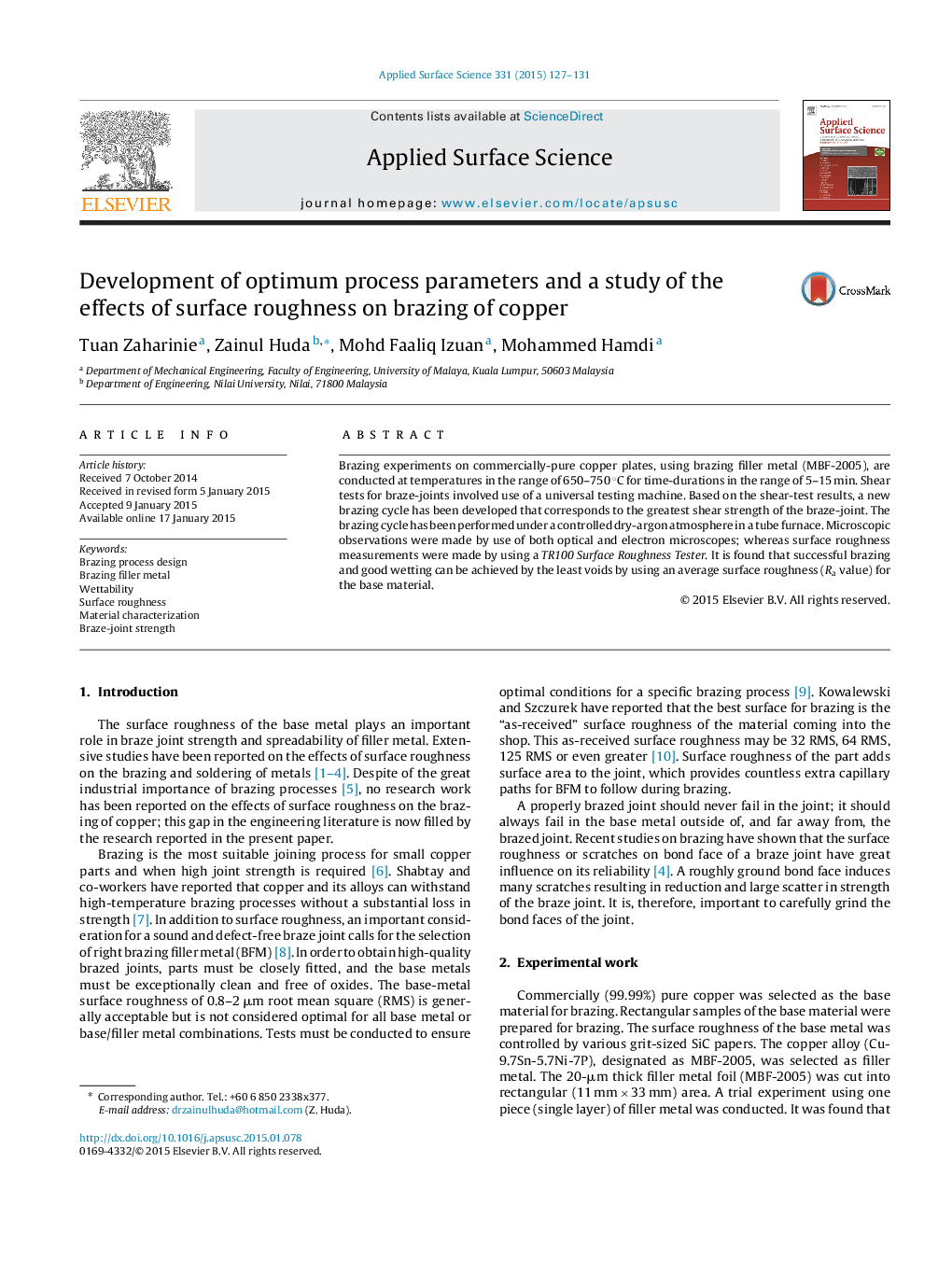| Article ID | Journal | Published Year | Pages | File Type |
|---|---|---|---|---|
| 5359054 | Applied Surface Science | 2015 | 5 Pages |
Abstract
Brazing experiments on commercially-pure copper plates, using brazing filler metal (MBF-2005), are conducted at temperatures in the range of 650-750 °C for time-durations in the range of 5-15 min. Shear tests for braze-joints involved use of a universal testing machine. Based on the shear-test results, a new brazing cycle has been developed that corresponds to the greatest shear strength of the braze-joint. The brazing cycle has been performed under a controlled dry-argon atmosphere in a tube furnace. Microscopic observations were made by use of both optical and electron microscopes; whereas surface roughness measurements were made by using a TR100 Surface Roughness Tester. It is found that successful brazing and good wetting can be achieved by the least voids by using an average surface roughness (Ra value) for the base material.
Related Topics
Physical Sciences and Engineering
Chemistry
Physical and Theoretical Chemistry
Authors
Tuan Zaharinie, Zainul Huda, Mohd Faaliq Izuan, Mohammed Hamdi,
